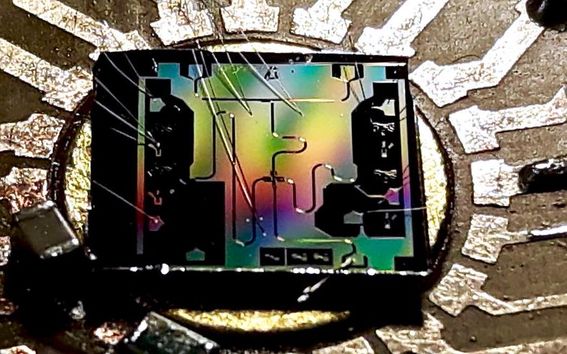InstituteQ - The Finnish Quantum Institute (external link)
InstituteQ coordinates quantum research, education, and business in Finland

As heat sets limits for traditional computing, so it does for quantum computers. Detecting and controlling the heat dissipation of quantum computers is central for developing better and more stable machines. Researchers at Aalto, the Universitét Grenoble Alpes and University of Konstanz worked together to test a theory about heat dissipation in a so-called phase slip in a quantum device. The result was a reliable and efficient way to measure dissipation that could be scaled to cover a range of quantum applications. The discovery was recently published in Nature Physics.
Beginning in 2018, Jukka Pekola, Professor and director of the quantum community InstituteQ, and Doctoral researcher Bayan Karimi of Aalto University have been developing a new kind of thermometer for measuring tiny energy changes. It approaches the theoretical limits of how fine a lens anyone can use to examine heat in the quantum world.
As part of the Marie Curie Network which enables researchers to collaborate across borders, Pekola and Karimi, along with Senior scientist Joonas Peltonen went to Grenoble in France to share the tools they developed at Aalto with French researchers.
‘We provided the idea about how to measure small energies with this thermometer of ours. Bayan Karimi and Joonas Peltonen were informing them about how to set up the measurements, what the proper tools for such measurements are, and how to initiate the project,’ Pekola says.
The scientists in Grenoble, led by Dr. Clemens Winkelmann, put the theoretical models and experimental setups to work and used them to detect the heat dissipation of a phase slip in a Josephson junction. A Josephson junction is a key part of a superconducting circuit in which two superconductors produce an always-on current between them without any voltage. A phase slip, in turn, refers to how quantum particles change their status over time, which produces an incredibly tiny but crucial amount of heat when it happens.
With Karimi’s and Pekola’s tools, Winkelmann and the team at Grenoble, in particular the doctoral student Efe Gümüs, observed a phase slip in a Josephson junction and were able, for the first time, to measure the instantaneous heat production caused by the slip. The group at Konstanz, led by Professor Wolfgang Belzig, provided the theoretical models of the experiment.
The experiment represents the first time that these quantum thermodynamical ideas were realized in practice. With better detection and control of heat dissipation, the discovery also has the potential to lead to more stable and higher fidelity quantum computers.
Pekola says that the work at Aalto focuses on getting to the heart of heat in quantum devices.
‘We want to go to tiniest detail of thermodynamics – to the level of single excitations. We want to examine quantum circuits and see how they release energy into their environment. The result can eventually be a tool for opening an entirely new perspective on quantum thermodynamics. Experimental results like these represent great strides forward in our understanding of thermodynamics in the quantum world.’

InstituteQ coordinates quantum research, education, and business in Finland


